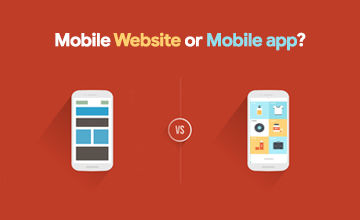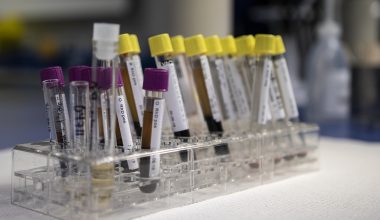
The health sector is one where technology is slowly transforming the sector. This industry adopts technology but in a very slow way. First, they ensure the proper functioning of technology and ensure that patients do not risk their lives. In addition, they make every effort to obtain a clear and sound justification for technological use.
We have seen how smart mobile devices and their dynamic applications have changed the health sector scenario over the last decade. Mobile devices are the next step after the revolution of smart mobile devices on the market. Therefore, wearable technologies would be the next phenomenon in the fitness and health industry
The health sector is totally changing with technology and many Wearable App Development Companies have taken advantage of this boom. Today, what we have in hospitals may not be recognized by what we used decades ago. This shows that it is important to keep pace with future changes. What plays a crucial role in determining which technology deploys faster? Privacy, public opinion, and security play this crucial role.
Major Factor Leading to the Rise of Medical Wearables
Increasing number of smart devices and connected world via IoT Increased awareness of health and well-being Integrating sensors into consumer devices ability to obtain timely medical support and investment from giants.
Role of Wearable’s in Healthcare Industry 2019
The Benefits of Wearable Healthcare App Development and service expected to expand strongly in the coming years. There will also be many improvements and advances that will change the way devices and portable applications are developed and created. Portable devices are often used to track the patient’s vital signs or health and fitness data. The health sector is facing digital uprising with technological violation. In addition, devices with artificial intelligence, big data and the Internet of Things add value to the industry. These benefits focus on accurate diagnosis, treatment and monitoring of vital signs and preventive measures. In addition, the use of the wearable device in the health sector provides benefits to professionals and patients.
Increasing Range of Wearable Devices Today
Smart watches and wrist trackers attract the most attention from the development of portable applications. Some smart implants are gaining popularity, expanding the range of medical devices that allow patients to control their health and control their shape using headphones, hearing aids, smart glasses, smart clothing and footwear, skin patches, implantable sensors and more.
Increasing Sophistication of Wearable Devices
The first generation of portable devices was cumbersome and difficult to use. This has discouraged consumers from using portable devices. However, wearable’s are getting smaller and more advanced. Many portable devices are designed to be used as accessories and on different parts of the body, making them fashionable or undetectable. Portable devices have become so tiny that they are almost invisible under your clothes or even on your body.
The main goal of this trend is to make the devices more compact and lightweight, and therefore agile and affordable for everyone. The smaller the devices, the more likely people are to engage
Paradigm Shift to Preventive Approach
This is especially true in the health sector that wearable’s completely changes the perspective of reagent medicine to preventative (for a patient in good health who must take steps to avoid getting sick). This approach can significantly reduce health care costs, increase quality of life, and overall well-being.
Size of the Wearable Devices
Portable devices and their technology are the most popular. According to this, this assumes that the region has a high potential for different innovations. With this phenomenal growth in the health care and fitness industry, the demand for mobile devices is about to succeed. It has predicted that the global market for wearable devices will double in size in 2021. According to the key points of the high level of innovation and growth of the technology sector, one cannot deny the future benefits of the devices will be provided to professionals and to patients too.
There are numerous types of devices in market like:
Fitness Tracker
- Body Sensors
- Wearable Patches
- Heart Straps
- Headbands
- Posture Monitors
- Movement sensors
- Smart watches
- Wrist devices
- Wearable Defibrillator
- Smart Clothing
- Smart Glasses
- Wearable Cameras
- Others
The Benefits of Wearable App Development in 2019
-
Early Diagnosis And The Remote Monitor
These healthcare solutions in wearable equipment enable early detection of symptoms with vital signs monitoring. Irregularities can be detected before they become a problem and could possibly be avoided. In addition, healthcare professionals can monitor real-time data from remote patients. Health professionals can get an idea of the issues that affect patients.
They can access the data for an accurate diagnosis that they could have without the devices.
-
Data Management
Portable devices collect data that can help health professionals analyze the complex interrelationship between health status and effective management. Evaluating data collected through devices such as smart watches, fitness tracking, etc. helps control the relationship between physical activity and calories consumed.
-
Self-Management
The devices are also useful for providing real-time data and promoting self-management of chronic diseases. There are many devices in the world that measure blood glucose and blood pressure. Specifically, data collected via the device is downloaded to mobile apps or the website for a more detailed view of health outcomes. These can provide a track model, show progress that can be easily shared with the health care provider. In addition, it can be said that the importance of mobile phone multiplies if it is associated with other tools such as a personal trainer, a health care provider and many others.
-
Informational Database
Real-time data storage allows for more comprehensive analysis of information. However, this would result in a more complete and accurate report of the patient’s medical history. And this can also be shared with other health care providers. It facilitates remote collaboration between the health care Health Care Wearable App Development Company in Bangalore, Mumbai, Gurugram, Dubai, California and could possibly continuously disseminate a training center to health care. This is possible by providing quick access to patient data stored online or in the health care database.
Key Takeaway:
Portable devices play a crucial role in disease prevention and surveillance. The goal is to provide real-time information, help with rehabilitation, and help maintain a fitness plan.
Mobile applications and wearable devices for the healthcare sector have experienced considerable growth in terms of improved medical services and patient experience. When patients are satisfied, there is more chance that others will gain confidence in your medical assistance. Current technology will bring something that improves the services offered and obtained. What you need to consider is how you need to do the same to get the most out of your health sector.
The wearable industry is constantly evolving and evolving. The future of wearable devices will have varied faces in the near future. Wearable App Development Companies will appreciate these next few years as they work on breakthroughs to bring about a major change in wearable devices. Then contact your Wearable application developer like Fusion Informatics at [email protected] for the development of your Wearable applications.




